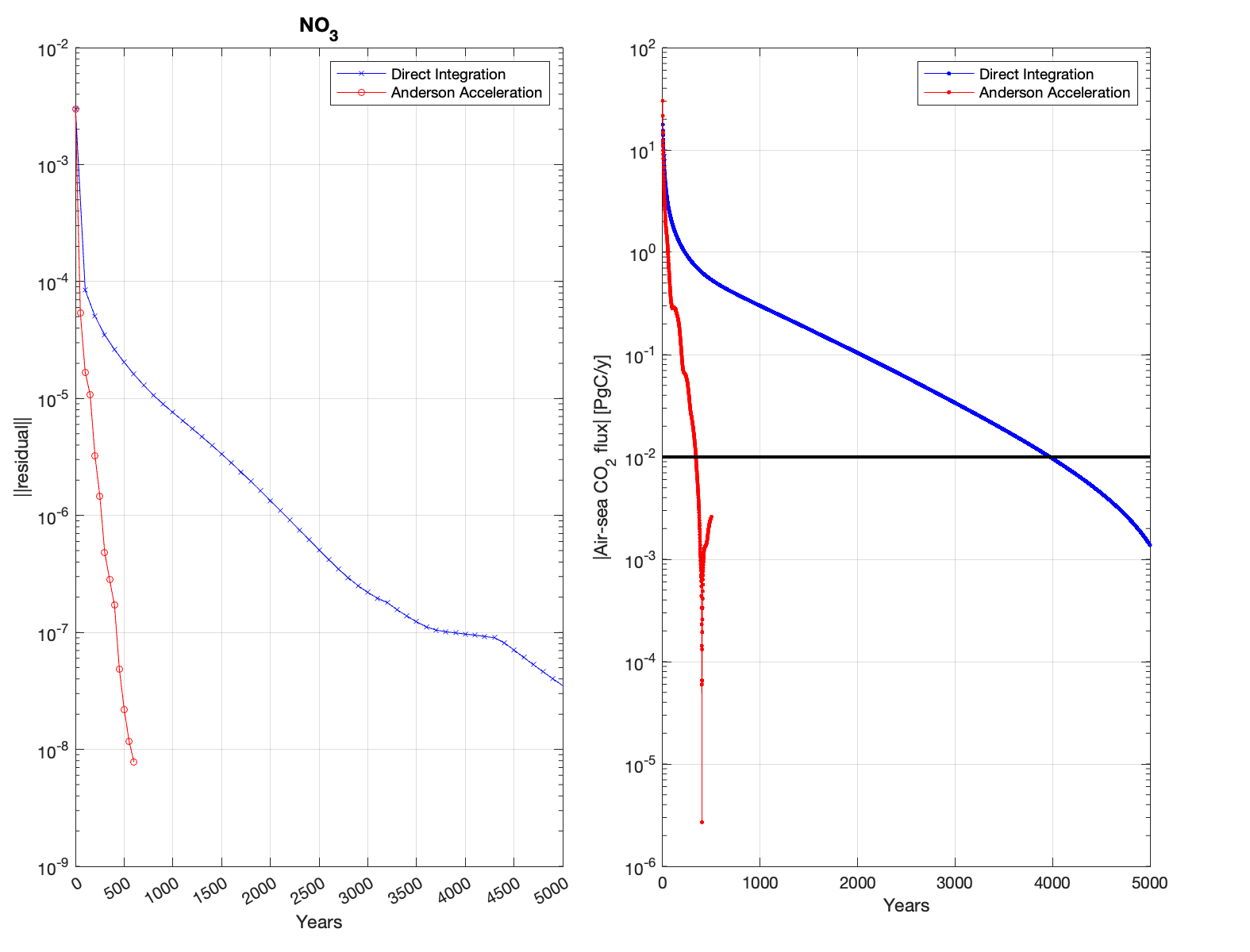New algorithm unclogs major bottleneck in ocean geochemical and biogeochemical modelling
Numerical models are some of the principal tools for understanding the cycling of geochemical and biogeochemical tracers in the ocean, with the latter also being important components of the Earth System Models used to project future climate change. However, in order to use these models they must first be integrated to a seasonally-repeating equilibrium with minimal drift, a computationally expensive calculation that can take months on supercomputers given the long turnover timescale – many thousands of years – of the ocean. This “spin-up” problem has long been a major bottleneck in marine geochemical and biogeochemical modelling.
In a study published last year in J. Adv. Model. Eearth Sys (2023, see reference below), a new algorithm was shown to speed-up by a factor of between 10-25 the spin-up of a wide range of geochemical tracers, such as radiocarbon, protactinium/thorium and zinc. It can be applied to any model in a “black box” manner.
Now, a follow up study published recently in Sci. Adv. (2024, see reference below) extends the previous results to complex marine biogeochemical models such as those used in the Coupled Model Intercomparison Project (CMIP) that underpin IPCC reports on climate change. The algorithm can accelerate the spin-up of seasonally-forced models by over an order of magnitude, and by a factor of 5 when driven with interannually forcing as is typical in CMIP simulations.
The ability to efficiently spin-up geochemical and biogeochemical models should enable their more effective use, for example making it feasible to calibrate models against observations and performing simulations at resolutions higher than has been previously possible.

This is a joint highlight with the US Ocean Carbon and Biogeochemistry programme.
Reference:
Khatiwala, S. (2024). Efficient spin-up of Earth System Models using sequence acceleration. Science Advances, 10. Access the paper: 10.1126/sciadv.adn2839
Khatiwala, S. (2023). Fast Spin‐Up of Geochemical Tracers in Ocean Circulation and Climate Models. Journal of Advances in Modeling Earth Systems, 15. Access the paper: 10.1029/2022ms003447
